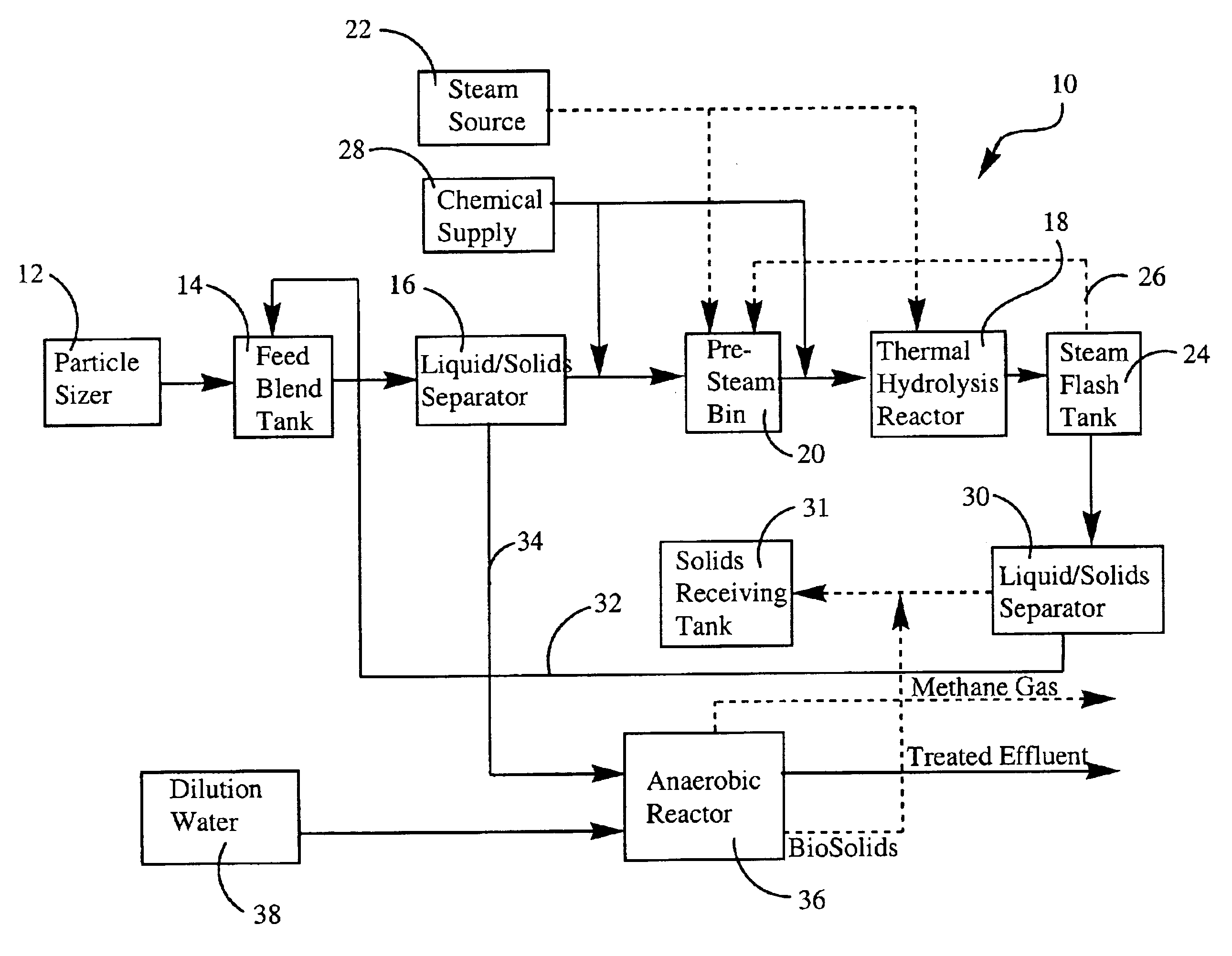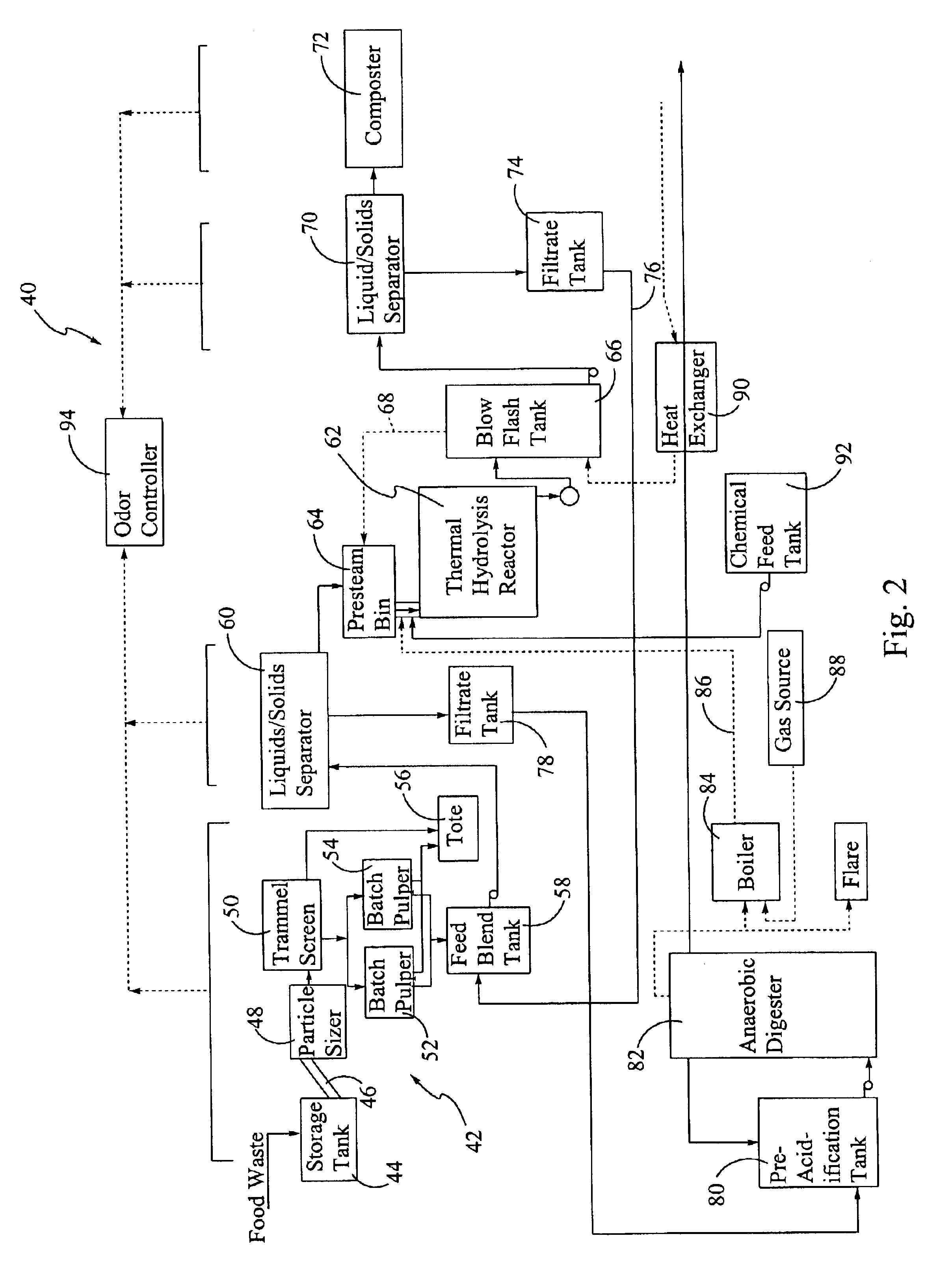Method and apparatus for the treatment of particulate biodegradable organic waste
a biodegradable organic waste and treatment method technology, applied in biological combination treatment, contaminated soil reclamation, gas production bioreactors, etc., can solve the problems of reducing the volume of organic waste, reducing the efficiency of biodegradable organic waste, and not being able to maximize solubilization or liquid removal. , to achieve the effect of reducing the volume of organic waste, reducing the volume requirements, and improving the efficiency of anaerobic digestion
- Summary
- Abstract
- Description
- Claims
- Application Information
AI Technical Summary
Benefits of technology
Problems solved by technology
Method used
Image
Examples
examples
[0032]A number of bench tests were conducted to evaluate the efficacy of hydrolyzation under various operating conditions and anaerobic digestion of the solubilized organics under different operating conditions. The feed stocks used in the examples below were taken from food waste obtained from Korean restaurants in the Seattle metropolitan area. Approximately 80 gallons of food waste was collected from three Korean restaurants and maintained in cold storage. Two heavy-duty household (“garbage”) grinders were used to grind the particulate waste to approximately {fraction (3 / 16)}″ or less sized particles. After the food waste was ground, it was put into two 50-gallon coated steel drums designated as Sample A and Sample B. Sample A was used for the first 9 hydrolysis treatability tests (cooks 1-9) and Sample B was used for cooks 10-19, which are described in greater detail below. The samples were analyzed to determine the crude protein, crude fiber, crude fat and ash con...
PUM
| Property | Measurement | Unit |
|---|---|---|
| Temperature | aaaaa | aaaaa |
| Temperature | aaaaa | aaaaa |
| Temperature | aaaaa | aaaaa |
Abstract
Description
Claims
Application Information
 Login to View More
Login to View More - R&D
- Intellectual Property
- Life Sciences
- Materials
- Tech Scout
- Unparalleled Data Quality
- Higher Quality Content
- 60% Fewer Hallucinations
Browse by: Latest US Patents, China's latest patents, Technical Efficacy Thesaurus, Application Domain, Technology Topic, Popular Technical Reports.
© 2025 PatSnap. All rights reserved.Legal|Privacy policy|Modern Slavery Act Transparency Statement|Sitemap|About US| Contact US: help@patsnap.com



